SOURCE: AFI

The Royal Moroccan Army has embarked on a significant modernization effort, widely adopting the Kavro MKH/ACH-7 combat helmet, a cutting-edge ballistic protection system manufactured by Kanpur-based MKU Limited of India. This advanced helmet, hailed for its lightweight design, enhanced ballistic protection, and compatibility with modern accessories, marks a milestone in India-Morocco defense cooperation and underscores the growing global reach of India’s Make in India initiative.
The Kavro MKH/ACH-7, an Advanced Combat Helmet (ACH), is engineered using MKU’s proprietary Macromatrix technology, which combines smart materials and advanced manufacturing techniques to deliver uniform protection across the helmet’s compound curves. Weighing approximately 1.2–1.4 kg, the helmet is significantly lighter than traditional models like the PASGT or older Moroccan M51 TTA and M78 F1 helmets, reducing fatigue during extended missions. Its bolt-free design eliminates weak points, ensuring Level IIIA protection against 9mm rounds, high-velocity fragments, and blunt impacts, with a Behind Helmet Blunt Trauma (BHBT) deformation of less than 16mm, minimizing concussion risks.
Continue readingSOURCE: AFI

War Thunder, the acclaimed military vehicle combat MMO, continues to expand its roster of iconic aircraft with the introduction of the HF-24 Marut, India’s first indigenous jet fighter, in the “Spirit of the Tempest” update. Gaijin Entertainment’s latest event brings this historic aircraft to the skies, offering players a chance to pilot a unique piece of aviation history.
The HF-24 Marut, developed by Hindustan Aeronautics Limited (HAL) in the 1960s, was a bold step for India’s nascent aerospace industry. Designed by a team led by German engineer Kurt Tank, the Marut was intended as a multirole fighter capable of ground attack and air superiority missions. Powered by two Bristol Siddeley Orpheus 703 turbojet engines, the aircraft could reach speeds of up to 1,112 km/h (Mach 0.9) and was armed with four 30mm ADEN cannons, complemented by a payload of rockets and bombs. Despite its innovative design, the Marut faced challenges due to underpowered engines and limited production, with only 147 units built. Its combat record includes service in the 1971 Indo-Pakistani War, where it excelled in ground attack roles.
Continue readingSOURCE: RAUNAK KUNDE / NEWS BEAT / IDRW.ORG

After the resounding success of the BrahMos-A air-launched cruise missile from the Indian Air Force’s (IAF) Su-30MKI fleet, Hindustan Aeronautics Limited (HAL) and the IAF are moving ahead with plans to further expand this potent strike capability. As per information obtained by idrw.org, work will begin later this year to upgrade an additional 20 Su-30MKI fighters to be capable of carrying the 2.5-ton BrahMos-A missile.
Currently, around 40 Su-30MKIs have been modified with hardened wings and reinforced undercarriage to accommodate the heavy BrahMos-A missile, which significantly extends the IAF’s stand-off strike capabilities. These specially modified aircraft have been at the forefront of India’s deterrence posture, capable of delivering precision strikes at long range against high-value land and maritime targets.
Continue readingSOURCE: RAUNAK KUNDE / NEWS BEAT / IDRW.ORG

In what could mark another significant milestone in the growing defence partnership between India and the Philippines, both nations are reportedly close to concluding a deal for the sale of the Akash 1S surface-to-air missile system to the Philippine Marine Corps. This will be the second major defence export from India to the Southeast Asian country after the landmark sale of the BrahMos supersonic cruise missile system in 2022.
According to reliable sources cited by idrw.org, negotiations over pricing and technical terms are progressing positively, and an official announcement regarding the deal is expected in the near future. The acquisition will significantly boost the Philippines’ air defence capabilities amid rising regional tensions in the South China Sea.
Continue readingSOURCE: RAUNAK KUNDE / NEWS BEAT / IDRW.ORG
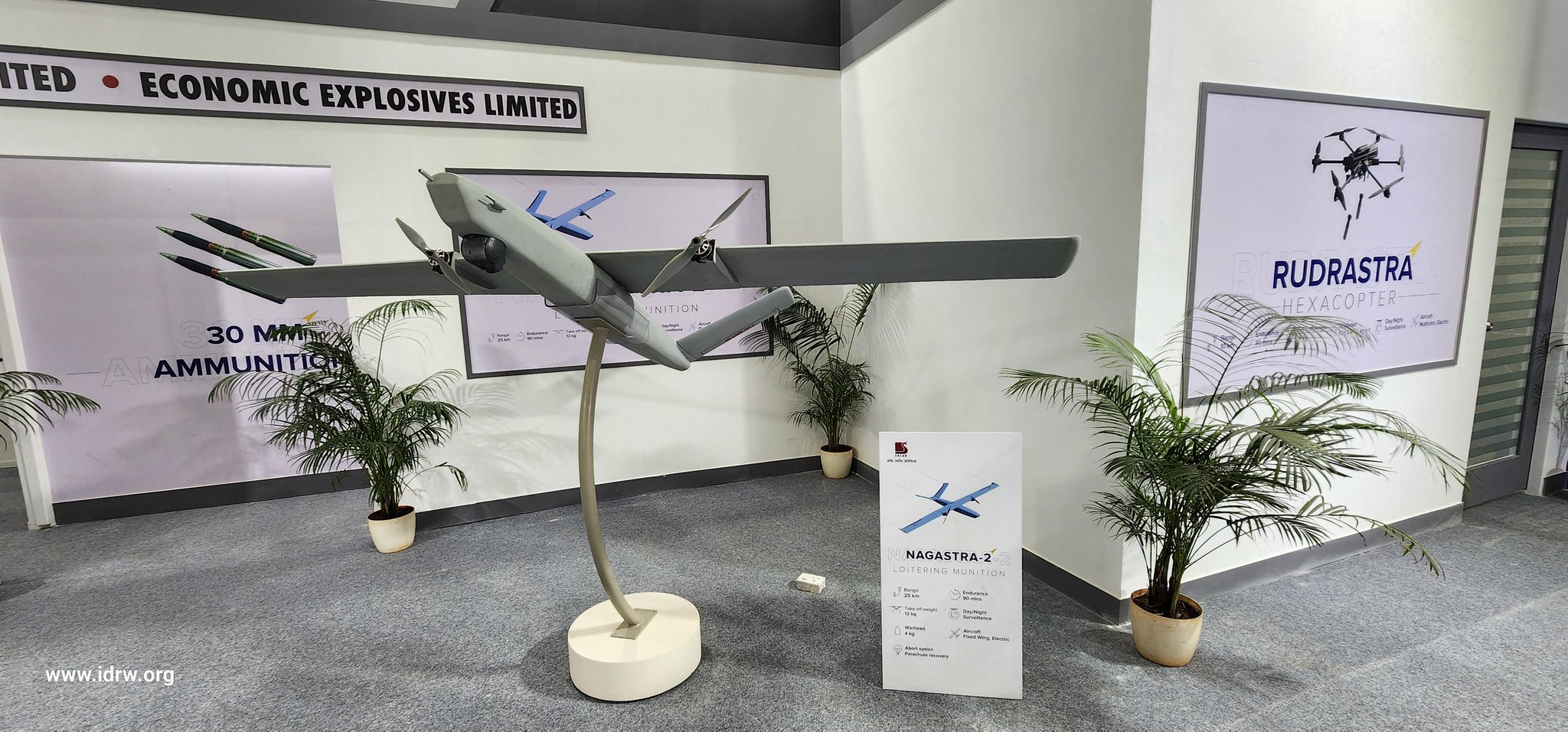
Following the spectacular battlefield performance of Indian-made loitering munitions such as Nagastra-1, developed by Solar Industries, during recent clashes with Pakistani forces, India’s private defence manufacturers are setting their sights on the global export market. With the systems proving their effectiveness in real-world combat scenarios, international interest in Indian-origin loitering munitions is expected to surge in the coming months.
Sources have told idrw.org that the Indian Ministry of Defence (MoD) has directed several private sector manufacturers to ramp up their export outreach, aiming to capture at least 10% of the global loitering munition market. The MoD sees this as a key segment where Indian defence firms can emerge as strong players due to a combination of combat-proven systems, competitive pricing, and indigenous development free from Chinese components.
Continue readingSOURCE: AFI
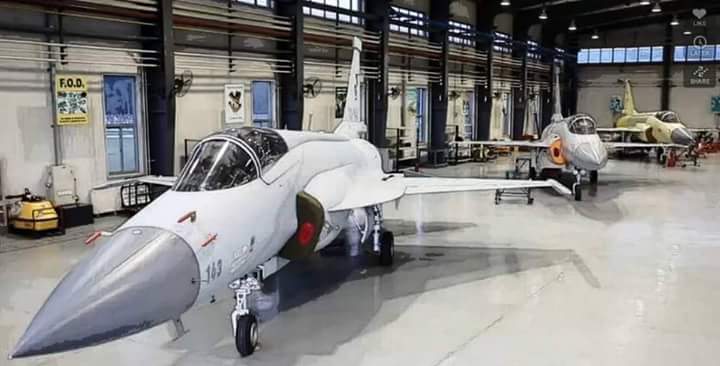
In the recent escalation of tensions between India and Pakistan, the Indian Air Force (IAF) reportedly devised a strategic plan to strike the Pakistan Air Force’s (PAF) key military infrastructure, including the Pakistan Aeronautical Complex (PAC) at Kamra, a critical hub for Pakistan’s air defense capabilities. The operation, aimed at neutralizing PAF’s operational strength, also involved targeting multiple PAF bases across Pakistan. This article explores the context, objectives, and implications of the IAF’s planned strikes, drawing on available information while maintaining a neutral and factual tone.
India and Pakistan have a history of military confrontations, with air forces playing a pivotal role in conflicts and skirmishes along their shared border. The recent clashes, reportedly sparked by cross-border incidents and retaliatory actions, saw both nations’ air forces engaging in high-stakes operations. The IAF, equipped with advanced fighters like the Rafale and Su-30 MKI, has consistently aimed to maintain air superiority, while the PAF relies on its fleet of F-16s, JF-17s, and other assets to counter Indian moves.
Continue readingSOURCE: AFI

In a significant development following the recent flare-up of hostilities between India and Pakistan, the international intelligence community has turned its attention to the wreckage of a Chinese-made PL-15 air-to-air missile. The missile, reportedly fired by Pakistan during an aggressive aerial engagement with India last week, was recovered in India’s Punjab region.
The Five Eyes intelligence alliance—comprising the United States, United Kingdom, Canada, Australia, and New Zealand—along with France and Japan, has expressed keen interest in analyzing the debris. This incident, part of the escalating India-Pakistan conflict, offers a rare opportunity to glean insights into one of China’s most advanced military technologies.
Continue readingSOURCE: AFI

Hindustan Aeronautics Limited (HAL) has confirmed significant progress in the development of the Tejas Mk2, India’s next-generation Light Combat Aircraft (LCA). The first prototype is currently under manufacturing, with the maiden flight now scheduled for the first quarter of 2026 (April–July), marking a slight delay from the previously anticipated timeline of Q4 2025. This update, announced by HAL and corroborated by the Aeronautical Development Agency (ADA), underscores India’s commitment to bolstering its indigenous defense aviation capabilities.
The Tejas Mk2, also known as the Medium Weight Fighter (MWF), is a 4.5-generation multirole combat aircraft designed to address the shortcomings of the Tejas Mk1 and Mk1A while meeting the Indian Air Force’s (IAF) stringent requirements. Featuring a larger airframe, close-coupled canards, a more powerful General Electric F414-INS6 engine, and advanced avionics, the Mk2 is poised to replace aging IAF aircraft such as the SEPECAT Jaguar, Dassault Mirage 2000, and Mikoyan MiG-29. The aircraft will boast an Active Electronically Scanned Array (AESA) radar, an integrated Infrared Search and Track (IRST) system, and the ability to carry indigenous weapons like the Astra air-to-air missile and BrahMos-NG air-to-ground missile.
Continue readingSOURCE: AFI
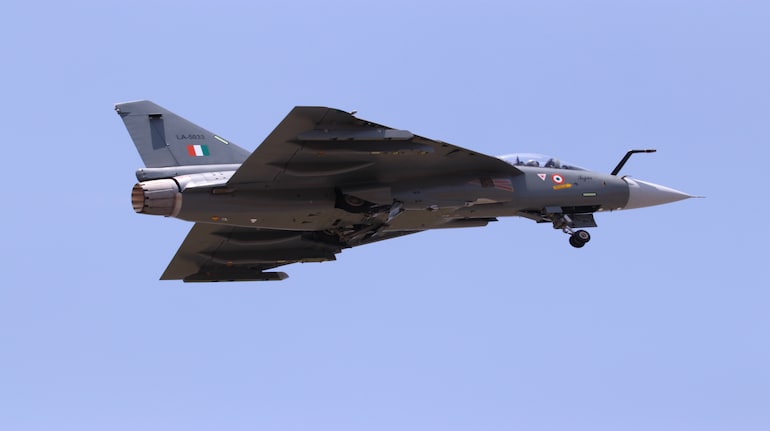
Hindustan Aeronautics Limited (HAL), India’s premier aerospace and defense public sector undertaking, announced on May 16 that it expects to deliver up to 12 Light Combat Aircraft (LCA) Tejas Mk1A jets to the Indian Air Force (IAF) by the end of 2025. The announcement, made during an earnings call, follows the commencement of engine deliveries from General Electric (GE) Aerospace, with the first LCA Mk1A aircraft slated to roll out within the next couple of months.
HAL’s management expressed confidence in meeting the delivery timeline, citing the resolution of key supply chain bottlenecks, particularly the long-delayed delivery of GE engines. “With the engines now arriving, we are on track to roll out the first LCA Mk1A in the coming months and aim to deliver up to 12 aircraft to the IAF by the end of this year,” a senior HAL official said during the earnings call. The company’s Bengaluru facility has ramped up production to meet the ambitious target, leveraging lessons learned from the earlier LCA Mk1 program.
Continue readingSOURCE: IDRW.ORG
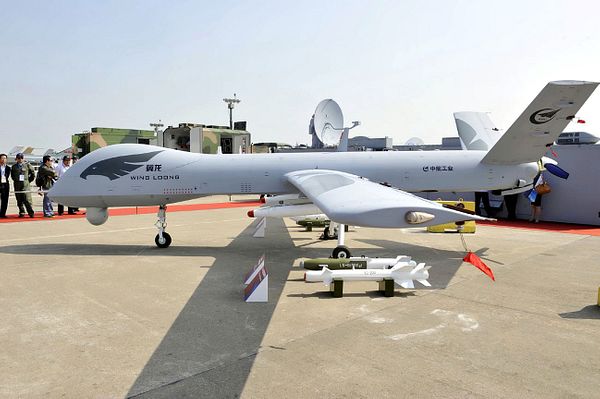
In a significant blow to Pakistan’s unmanned aerial capabilities, the Indian Air Force (IAF) destroyed a hangar housing multiple Chinese-made Wing Loong II Unmanned Combat Aerial Vehicles (UCAVs) at Pakistan Air Force (PAF) Base Sukkur in Sindh province during Operation Sindoor on May 7–10, 2025. Satellite imagery, corroborated by posts on X and reports from outlets like NDTV and India Today, confirms the complete collapse of the 54-meter hangar, a critical facility recently established with Chinese assistance. The strike, executed with precision using Rampage air-launched ballistic missiles (ALBMs) from IAF Jaguar Darin-II aircraft, has dealt a severe setback to Pakistan’s drone warfare capabilities, with at least one Wing Loong II confirmed lost.
Operation Sindoor was launched in response to a deadly terror attack in Pahalgam, Jammu and Kashmir, on April 22, 2025, which killed 26 civilians and was attributed to Pakistan-backed terrorist groups. The IAF targeted 11 PAF air bases, including Sukkur (also known as Bholari), to degrade Pakistan’s air and drone capabilities. Sukkur, a modern base inaugurated in 2017 under Pakistan’s Southern Air Command, is strategically located in Jamshoro district, Sindh, northeast of Karachi. It hosts advanced assets like F-16 Block-15 A/B and JF-17 Block-2 fighter jets, as well as SAAB 2000 Airborne Early Warning and Control (AEW&C) aircraft. Crucially, it serves as a hub for Pakistan’s growing fleet of UCAVs, including the Wing Loong II.
Continue readingSOURCE: IDRW.ORG

India’s indigenous Drone Detect, Deter, and Destroy system (D4S), developed by the Defence Research and Development Organisation (DRDO) and manufactured by Bharat Electronics Limited (BEL), has emerged as a game-changer in modern warfare. The system’s recent success in neutralizing Turkish-supplied drones during the India-Pakistan conflict has not only proven its combat effectiveness but also attracted significant international interest. According to a DRDO official speaking to idrw.org, inquiries from multiple countries have started pouring in for the D4 system, signaling India’s growing stature in defense technology.
The D4S, India’s first indigenously developed anti-drone system, offers 360-degree coverage, making it a formidable shield against aerial threats. Designed to counter rogue drones, including micro and small unmanned aerial vehicles (UAVs), the system has demonstrated its ability to detect, track, and neutralize threats in real time. It employs a dual-layered approach: a “soft kill” mechanism that disrupts drone communications through radio frequency (RF) jamming, Global Navigation Satellite System (GNSS) jamming, and GPS spoofing, and a “hard kill” option using laser-based directed energy weapons to physically destroy targets. The system also provides detailed optical and thermal imaging, alongside RF spectrum display on its graphical user interface, ensuring precise identification and engagement of threats.
Continue readingSOURCE: AFI
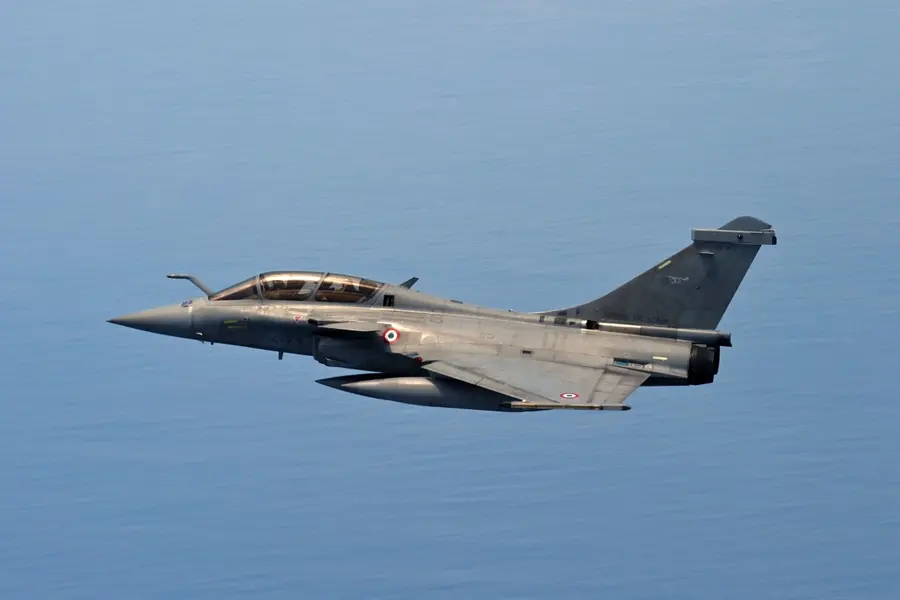
On May 7, 2025, India launched Operation Sindoor, a series of precision airstrikes targeting nine terrorist camps in Pakistan and Pakistan-occupied Kashmir (PoK) in retaliation for a deadly attack in Pahalgam, Indian-administered Kashmir, on April 22. In the wake of the operation, Pakistan’s military and media claimed a stunning victory, alleging that they shot down five Indian Air Force (IAF) aircraft, including three advanced Dassault Rafale fighter jets, during clashes near Wuyan village in Jammu and Kashmir.
These claims, amplified by pro-Pakistan social media accounts, sparked widespread debate. However, a French expert, alongside India’s Press Information Bureau (PIB) and other analysts, has decisively debunked these assertions, exposing them as part of a disinformation campaign.
Continue readingSOURCE: AFI

In recent years, India’s rise as a global economic and geopolitical player has been accompanied by intense scrutiny from Western media. From allegations of human rights abuses to criticisms of its democratic institutions, the coverage often paints India in a negative light. But is there more to this narrative than meets the eye? Former Indian Ambassador to France, Jawed Ashraf, suggested in a conversation with The Statesman Talk that commercial interests, particularly in the aerospace sector, could be fueling some of these biases. Specifically, he pointed to Western media targeting India’s indigenous aircraft, hinting at a possible motive: competition in global markets.
India’s push for self-reliance in defense manufacturing, exemplified by initiatives like Make in India, has led to significant advancements in its aerospace industry. The development of the Hindustan Aeronautics Limited (HAL) Tejas, a lightweight multirole fighter jet, has been a flagship achievement. Designed to compete with global counterparts like the French Rafale, American F-16, and Swedish Gripen, the Tejas represents India’s ambition to capture a share of the lucrative global defense market.
Continue readingSOURCE: AFI

On May 10 and 11, 2025, India’s National Aerospace Laboratories (CSIR-NAL) marked a significant milestone in its High-Altitude Platform (HAP) program. Celebrating the anniversary of its altitude-record flight, the subscale HAP—a solar-powered unmanned aerial vehicle (UAV)—repeated its remarkable feat, climbing to 24,000 feet above mean sea level (AMSL) on both days.
The subscale HAP, a prototype of CSIR-NAL’s ambitious High-Altitude Pseudo-Satellite (HAPS) program, is designed to operate at stratospheric altitudes of 18–20 kilometers (approximately 60,000–66,000 feet). Unlike traditional satellites, HAPS offers a cost-effective alternative for applications like surveillance, telecommunications, and environmental monitoring. The vehicle’s ability to loiter for extended periods—potentially months—powered by solar energy during the day and high-density batteries at night, positions it as a game-changer in the global aerospace landscape.
Continue readingSOURCE: AFI

On May 15, 2025, President Donald Trump sparked intrigue in the aerospace and defense communities by announcing plans for a twin-engine variant of the Lockheed Martin F-35 Lightning II, which he dubbed the “F-55.” Speaking at an event covered by outlets like The Aviationist, Trump described the F-55 as a “substantial upgrade” over the single-engine F-35, while also mentioning ongoing modernization efforts for both the F-35 and the F-22 Raptor. His remarks, widely shared across platforms like X, have raised questions about the feasibility, purpose, and implications of this proposed aircraft.
President Trump’s comments come amid a broader push to bolster U.S. military capabilities, particularly in response to evolving global threats from adversaries like China and Russia. The F-35, a family of single-engine, stealth multirole fighters, has been a cornerstone of U.S. air power since its introduction. However, its high costs—estimated at over $400 billion for the program—and technical challenges have drawn criticism, including from Trump during his first term.
Continue reading